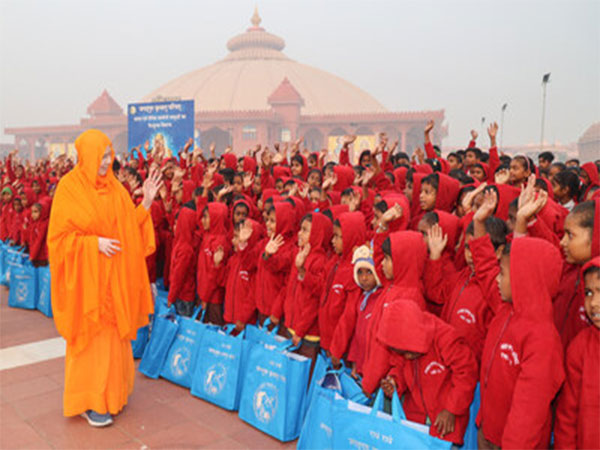
Turkey-Syria earthquake: 15 homes, just three survivors
Feb 11, 2023
Kahramanmaras [Turkey], February 11: On an indistinct mound of rubble in southern Turkey is an uncannily well-preserved window frame with a butterfly print curtain that flutters in the cold wind.
Before the earthquake, 19-year-old CeydaOcan looked through that window and those curtains, on to her street in the city of Iskenderun. Now her best friend Damla is on the street with her family to keep vigil at the fallen apartment block, hoping that Ceyda has survived, as rescue workers sift and dogs sniff for signs of life.
Damla met Ceyda in the neighbourhood when she was six and Ceyda eight, and they stayed close. They bought those curtains together on a recent shopping trip.
Ceyda's apartment block, called Orcan, sat in a row of mid-rise pink and beige buildings with small balconies, in the centre of Iskenderun, all with shops on the ground floor. When the 7.8 magnitude earthquake struck at 04:17 on Monday, Ceyda would have been sleeping, along with the other residents of Orcan.
The block crumpled with the force of the tremor.
Many buildings in southern Turkey have been wiped out of existence this week, but this is the story of Orcan, home to Ceyda and her family alongside the residents of 14 other flats. In the days after the quake, their friends and family gathered round Orcan hoping for the best, and speaking of their loved ones.
We witnessed one brief moment of elation on Wednesday when a survivor was pulled from the rubble after more than a day of digging - one of Ceyda's neighbours.
According to rescuers and residents in the area, she managed to say that she had spoken to Ceyda through the fallen walls, and that Ceyda had said she was OK. But officials warned that the survivor was disorientated - it might not have actually happened. By Friday, there was no more news.
We went back to Orcan for three days in a row to witness the informal rescue efforts, the people fleeing for safer places, and the field hospitals erected for survivors. Rescuers and neighbours all told us that they knew of three people who survived - the rest are unaccounted for.
Those gathered said Orcan was home to a tight-knit community, where neighbours would frequently visit each other's homes for tea or strong Turkish coffee.
Residents of Orcan and other buildings on the street had WhatsApp groups and arranged regular meet-ups. "It was like, your place this week, yours next," one local man said. "This is the Turkish way."
When asked what the neighbourhood was like, Damla's uncle Emrullah, who ran the local grocery shop, clasped his hands together. "Like this," he said.
Orcan has stood for decades. "I'm 50 years old and I remember walking past it on my way to and from school," one man said.
When the earthquake hit, locals told us the buildings on Orcan's row fell "like dominoes". On either side of the line of destruction, similar buildings appear unscathed and their residents spoke with both guilt and relief.
Cansu, a local paramedic, knew several of the people who lived in Orcan. After the earthquake hit, she left her home and ran round the corner to the entrance of Ceyda's street, she said.
The buildings along that row are now crumpled together in a mass of debris. Only a few traces of the residents inside are visible: a kite decorated with characters from the Disney film Frozen; a torn Quran; a squashed white oven; a red-rimmed clock, frozen in time.
A man whose grandfather - a swimming enthusiast with a love for beer and stuffed peppers - lived in the building next door reached into the rubble beneath Ceyda's curtains and pulled out a phone.
It was still working - and the background picture was his grandfather's face. The man smiled a bittersweet smile.
Source: Fijian Broadcasting Corporation









